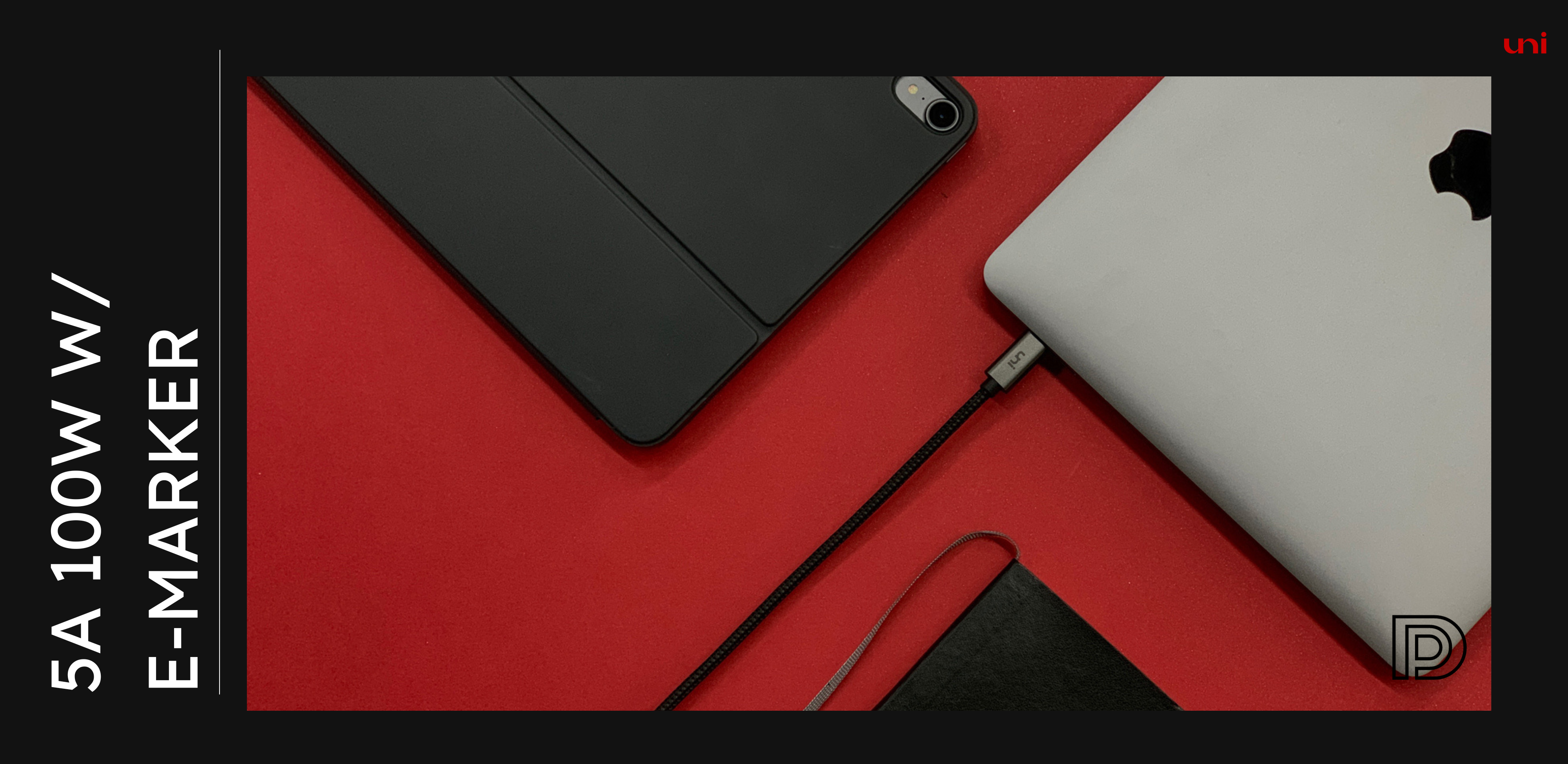Your Cart is Empty
📣 15% Off Entire Order on newbies use [CODE4NEW]
📣 15% Off Entire Order on newbies use [CODE4NEW]
USB-C Cable Essentials: A Quick Dive Post-iPhone 15 Release
September 18, 2023 3 min read
I dove into the world of USB4 bridges and took a closer look at USB-C cables. The topic is quite vast, and there aren't many comprehensive resources online. The official USB-IF specs? Super long. But with the iPhone 15 Pro launch, people are hunting for high-speed cables.
Here’s a quick breakdown:
🔵 USB 2.0 C-C without E-Marker Chip
Connects the basic 4 wire cores of USB 2.0 and one for USB PD. Super affordable, so it's common. You'll find it bundled with many gadgets for charging.
🔵 USB 2.0 C-C with E-Marker Chip
The E-Marker chip is used to store manufacturing information about the wire, such as the maximum supported current, as overheating creates a safety hazard when high currents are used in overly thin cables.
Too much current in a skinny cable? Risky! It can overheat. So, for power beyond 3A or 60W, this cable's a must.
This five-core cable is popular with today's phones and laptops. Commonly found with Apple devices, recent phones, and laptops.
A fun fact? The E-Marker chip is at both ends, ensuring your devices get just the right power.
🔵 High-speed Cable without E-Marker Chip
Usually included with USB external hard drives, this type of cable requires 12 cores, and the cables are generally thicker.
Most people know that the E-Marker chip is related to charging power. In fact, the E-Marker chip is also related to the line speed. The USB standard now mandates that all high-speed lines must have the E-Marker chip declared rate, so this type of line without a chip has been eliminated and is a non-standard line.
When using this type of wire for high-speed communications, the speed will not exceed 10Gbps. TB3 and USB4 do not directly support the use of this cable.
🔵 High-speed Cable with E-Marker Chip
This cable's chip proudly announces the speeds it can achieve - and they can surpass 10Gbps! You've got options: Thunderbolt3/4, USB3.2-10Gbps, USB4-20Gbps, and USB4-40Gbps/80Gbps. But they're essentially similar in wire core count and pin setups. The difference? Electrical traits and the E-Marker's details. And yes, speedier means bulkier.
There is also the difference between active and passive lines, which is generally not touched upon and will not be expanded upon here.
🔹Two Common Questions:
1. What is the relationship between Thunderbolt4 and USB4?
USB4 includes a series of optional features, while Thunderbolt4 is based on USB4 and makes some optional features mandatory and certified (such as PCIe and 2x4K@60). Logically speaking, Thunderbolt4 is a subset of USB4, but Thunderbolt4 represents a higher standard.
For consumers, just treat it as one thing and carefully check whether the segmented functions they need are supported.
2. Are TB3 cables and USB4 40Gbps cables twins?
The answer is yes and no:
a. Both can handle 40Gbps: The electrical performance of both can meet the requirements of 40Gbps.
b. The type declarations in E-Marker are different. One is Thunderbolt3 and the other is USB4 Gen3.
c. TB3 and USB4 controllers seamlessly work with both types of cables. So, in practice, they function the same. If you already have a Thunderbolt3 cable, there's no pressing need to get a new USB4 one. Just keep in mind, their lengths might differ.
We'd love to read your comments down below.
Don't be shy, share your thoughts with us!
Thanks for reading, and until next time, take care!
#uniAccessories
Leave a comment
Comments will be approved before showing up.
Also in Blog
Related Products
Recent Articles
- Do I need a type c hub? What do you need to know before buying? April 12, 2024
- Can I Get 4k With USB-C to HDMI Cable or Hub? January 15, 2024
- Which USB-C Hub Should You Get? (Checklist) January 08, 2024
- Does USB-C Over Ethernet Work To Get Speedier Internet? January 01, 2024
- DisplayPort Over USB Type-C: The DP Alt Mode in Working December 27, 2023
- How to make Android phone Charge Faster (technician advice) December 11, 2023
- iPhone 15 USB-C port: It’s Not That Impressive December 04, 2023
- USB-C Power Delivery: How Does Fast Charging Work? November 06, 2023
- Thunderbolt 4 vs. USB-C: A Straightforward Comparison October 30, 2023
- Thunderbolt 4 Vs. USB4: What's Different in 2023-24 October 23, 2023






